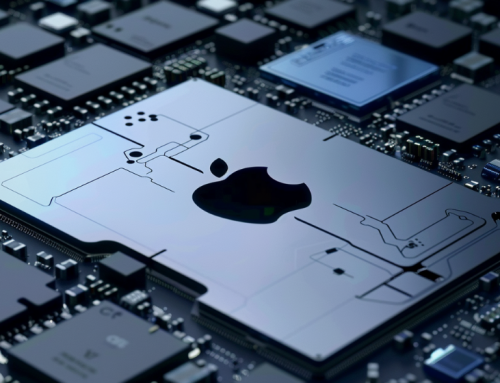
China On Course For Global AI Dominance
Andrew Ng, the former AI chief of “China’s Google” Baidu has famously called artificial intelligence “the new electricity,” and his former employer’s nation seems well on the course to not only make this prognostication a reality, but also outpace the United States and other tech economies in what could be the 21st century’s “Space Race”—with consequences that could overturn the geopolitical landscape in the coming decades and even shift the evolutionary future of our species. Just as the Soviet Union’s launch of Sputnik sparked the global space race that catalyzed America’s space program and eventual primacy over its Cold War adversary, so too may today’s burgeoning “AI explosion” in the United States and China represent this century’s “Sputnik Moment.”

Andrew Ng. Image via CBInsights.
The United States remains the world’s top economy and global leader in technological research and development—including AI—an advantage the U.S. has comfortably maintained for decades and at great magnitudes over competing nations. However, there are signs that the global economic tide is shifting in China’s favor, with China vying to be a serious competitor and approaching parity with the US on every front save for America’s military dominance and global reserve currency. And AI—perhaps our “final invention” given its power to optimize by magnitudes virtually every other field of human creation—is no exception.
The U.S. leads the world in AI innovation, hosting the field’s foremost companies and research initiatives such as Amazon, IBM, Google DeepMind, Facebook, OpenAI and others, as well as the world’s leading tech universities. But despite the U.S.’s immense monetary investments in AI and its pool of technological and business talent, China is catching up with the U.S. in AI development, with some predicting that if current trends continue, China will catch up with the U.S. in AI as soon as five years from now, according to experts. This year China announced officially that it seeks to become the world’s AI superpower by 2030.

This graphic showing data through 2015 demonstrates the quickening pace of China’s tech spending over the past decade. Image via OECD.
China’s increasing technological prowess in AI research driven is by a number of key advantages and cultural differences. While the U.S.—especially under the Trump administration—is actively cutting back on federal technological funding and gutting federal initiatives into renewable energy, China by comparison is increasing its technological spending and fast becoming the global leader in renewable energy, another sign of China’s rising tide of progressive thinking, industrial might, and technological ingenuity vaulting the nation into the forefront of the so-called “Fourth Industrial Revolution”driven by AI and other emergent technologies.
Culturally the Chinese approach to technological research may be more fruitful than American approaches. Home to tech giants Baidu, Alibaba and Tencent—each with a keen focus on AI—China enjoys a rapidly growing population of university students interested in AI. While both America and Chinese research communities share a community of open collaboration and access to technical and academic knowledge, Chinese students benefit from a more globally-minded outlook and better language skills. This enables them to read papers in English and other world languages, while the opposite is seldom true for most American students and researchers.
Chinese innovation in AI may, however, benefit most from its vast population and the darker side of the nation’s cultural landscape which enables tech companies and the Chinese government to leverage its population. The modern Chinese government is still by most measures an authoritarian regime, albeit one which The New York Times describes as “Philip K. Dick meets George Orwell.” The Chinese government has notoriously far fewer qualms than the U.S. government when it comes to exercising the power of the state over its citizenry, and enthusiastically seeks to use AI to enhance its power domestically and abroad. Its AI systems enhance state control over the population in ways ranging from internet censorship and monitoring to mass public surveillance. It also uses AI technology designed to analyze and eventually predict petty crimes and terrorism.
Data is the crucial ingredient which powers machine learning, and China—which The Economist calls “the Saudi Arabia of data”—has an abundance of data from the world’s largest population of Internet users. Combined with China’s authoritarian approach to personal privacy, the country may have the perfect recipe for creating and enhancing AI programs: the state and Chinese tech firms have a population of 1.38 billion people—at least 730 million of them online—from which to vacuum incalculably vast amounts of data from with no regard for personal privacy. This data, in turn, can be used to further gather and exploit more and better data with which to train China’s AI systems.
However impressive America’s headline-making AI breakthroughs as AlphaGo or IBM Watson—the primitive Sputniks of AI research—China could be only years away from its own proverbial Saturn V AI moonshots. As with all discussions on what will be our species’ most important invention, the future of the AI “space race” is uncertain and no wild guess is off the table in the coming century of unprecedented innovation; let us hope for and diligently strive toward a future of peace, abundance and cooperation and begin working now toward a world which prioritizes measured and beneficial uses of AI so that we all “win” the race.
China’s increasingly likely AI eminence need not spell doom for the rest of the world nor portend an Orwellian technological dystopia, as AI breakthroughs on either side of the Pacific have the potential to change both nations for the better, much in the way that the space race, no matter how heated, brought myriad helpful technologies back to Earth and ultimately fostered increased cooperation between space-faring nations.







Leave A Comment